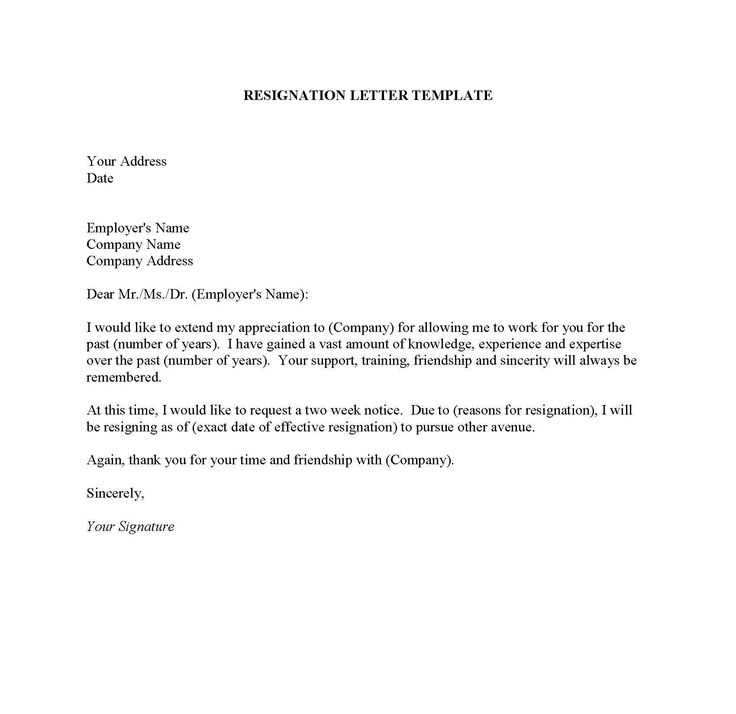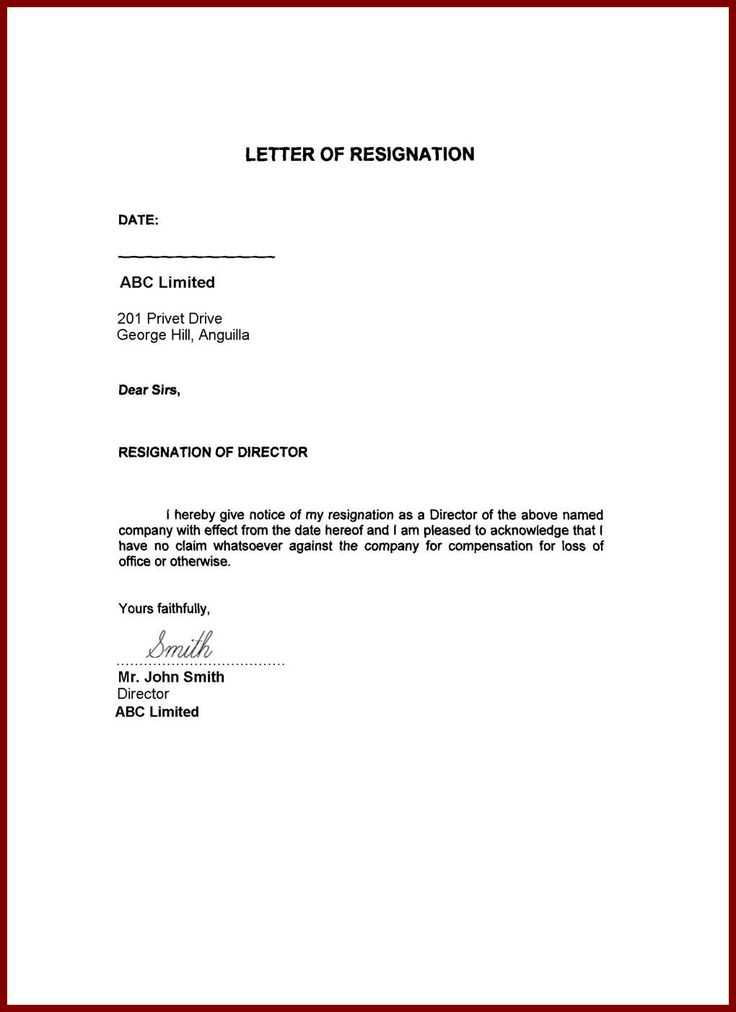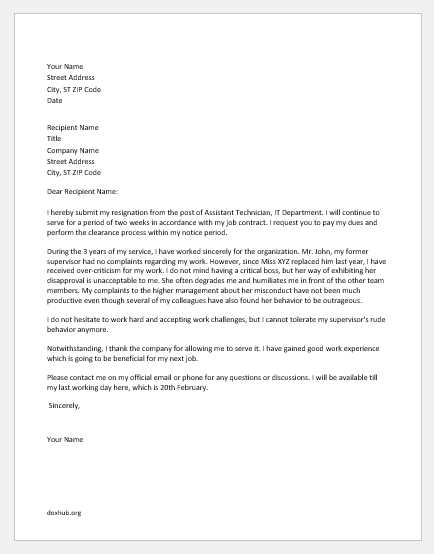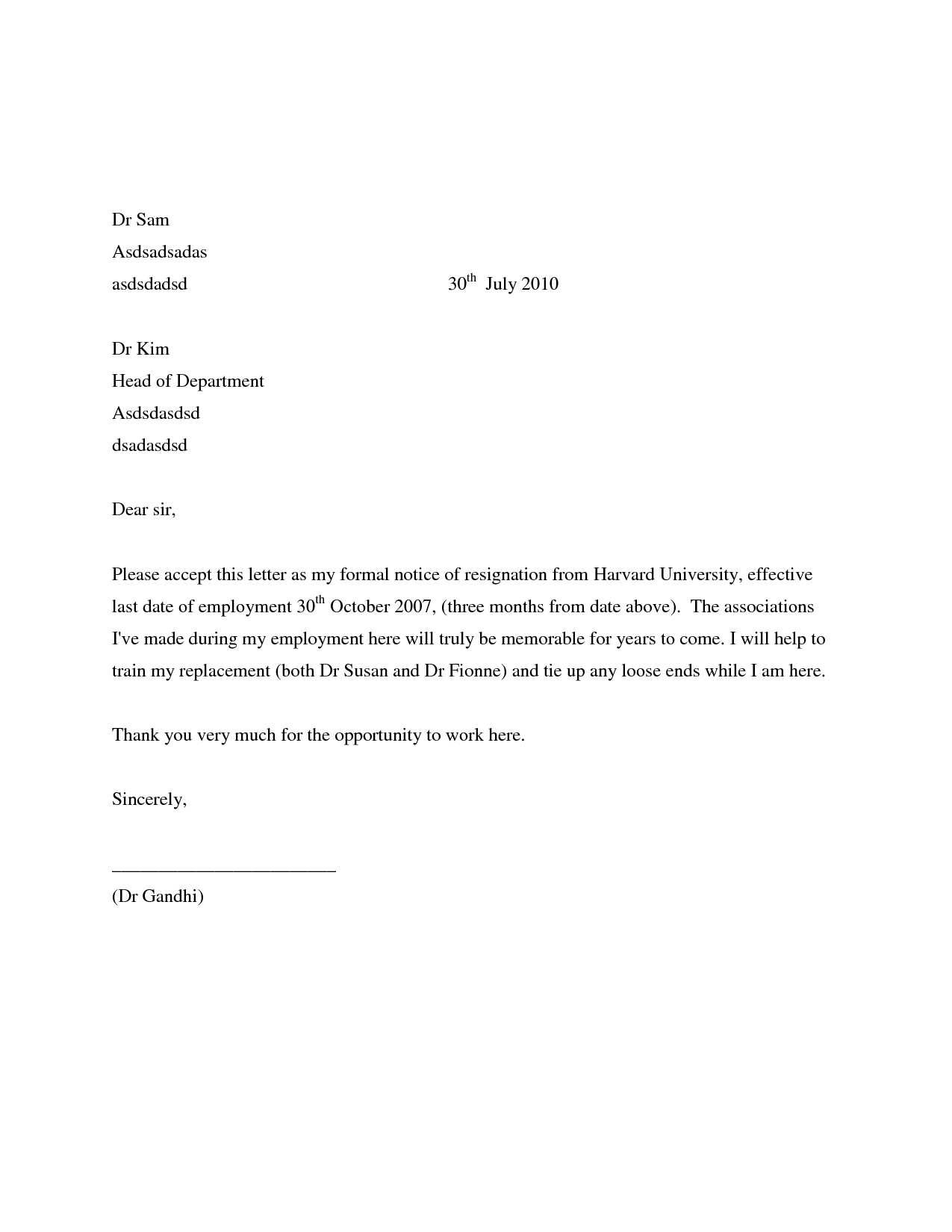Tenancy resignation letter template

Writing a tenancy resignation letter doesn’t have to be complicated. Keep it simple, clear, and direct. If you plan to vacate the rental property, inform your landlord or property manager well in advance, typically 30 days before your intended move-out date. This ensures a smooth transition for both parties.
A well-crafted letter should include your full name, the property address, the date of departure, and any specific details about the return of keys or the condition of the property. Be polite but straightforward. Acknowledge any responsibilities you have, such as final inspections or cleaning, to avoid confusion later.
To help you draft your resignation letter, you can use a template to organize your thoughts and maintain professionalism. It’s always a good idea to double-check your lease agreement for any specific terms or timelines related to ending your tenancy.
Here’s the revised version without repetitions:
Keep your resignation letter concise and clear. Avoid over-explaining or adding unnecessary details. State your intention to leave, providing the exact date of departure. Maintain a respectful tone throughout, even if the reasons for leaving are personal or uncomfortable.
Example:
Dear [Landlord’s Name],
I am writing to inform you of my decision to end my tenancy at [Address]. My move-out date will be [Date]. I will ensure the property is left in good condition as per our agreement. Please let me know how I can assist with the transition process, such as scheduling a final inspection or returning the keys.
Thank you for your understanding, and I appreciate your cooperation during my stay.
Sincerely,
[Your Name]
- Tenancy Resignation Letter Template
A tenancy resignation letter should be clear and concise. Follow this simple template to ensure that you provide all necessary details to the landlord or property manager:
- Your Full Name: Always begin by stating your full name as it appears on the rental agreement.
- Your Current Address: Include your rental address to ensure there is no confusion about which property you are resigning from.
- Landlord’s Name: Address the letter to the landlord or property manager by name.
- Notice Period: Specify the date from which your resignation is effective and the final date of your tenancy. Be sure to follow the notice period required by your lease agreement.
- Reason for Resignation (Optional): While not required, you can briefly explain why you are resigning. This can be helpful but is not necessary for the resignation itself.
- Request for Move-Out Instructions: Politely ask for any move-out instructions, such as cleaning or key return procedures.
- Closing: End the letter with gratitude for the landlord’s cooperation and any necessary contact details.
Here is an example of a tenancy resignation letter:
Subject: Notice of Tenancy Resignation
Dear [Landlord’s Name],
I, [Your Full Name], am writing to inform you that I will be vacating the premises at [Your Current Address]. My final date of tenancy will be [Date], in accordance with the required notice period outlined in the lease agreement.
Please let me know if there are any move-out procedures I should follow. I would also appreciate your confirmation of the date for the final inspection of the property.
Thank you for your cooperation during my time as a tenant. Please contact me at [Your Phone Number] or [Your Email Address] for any further details.
Sincerely,
[Your Full Name]
By following this template, you ensure a professional and respectful resignation process that leaves a positive impression with your landlord.
Keep your resignation letter brief and to the point. Use a professional tone and avoid unnecessary details. A standard format includes the following key components:
1. Contact Information
At the top of the letter, include your name, address, phone number, and email. Afterward, add the date and the recipient’s name, title, and company address. This provides a formal structure and ensures clarity.
2. Subject Line (Optional)
If you’re submitting the letter via email, a subject line helps to immediately inform the recipient about the purpose of your message. A simple subject like “Resignation Notice” will suffice.
Next, address the letter with a formal salutation such as “Dear [Manager’s Name],” followed by a clear and concise statement of your intention to resign. Ensure you mention the last working day to give your employer enough time for transition planning.
Keep your tone polite and respectful throughout, even if you are leaving due to negative circumstances. This maintains professionalism and avoids potential misunderstandings.
3. Closing
Finish with a formal closing, such as “Sincerely,” followed by your signature or name if submitting electronically. Offering gratitude for the opportunity to work with the company is a thoughtful touch, even if you’re excited to move on.
Clearly state your intention to vacate the property, including the specific date you plan to move out. This ensures there’s no ambiguity regarding your departure timeline.
1. Full Name and Address

Include your full name and the address of the rental property. This makes it easy for the landlord to identify you and the lease in question.
2. Lease Termination Date

Specify the date you plan to end the tenancy. This should align with the notice period outlined in your rental agreement.
3. Contact Information
Provide up-to-date contact details so your landlord can reach you for any final matters, such as the return of your security deposit.
4. Request for Security Deposit Return
Clearly request the return of your security deposit, unless there are damages or unpaid dues. Mention the date you expect the refund.
5. Forwarding Address

List a forwarding address where you can receive any future correspondence or leftover items from the landlord.
Clearly outline the status of your security deposit and any final payments due. Specify the amount of the deposit you paid at the start of the tenancy and include any deductions that might be applied for repairs, cleaning, or unpaid bills.
Security Deposit Details
- State the exact amount of the deposit you paid.
- Request a confirmation of the condition in which you left the property, noting that you expect a full refund if no damages or excessive cleaning are required.
- If applicable, mention any specific deductions you agree to or disagree with, and ask for an itemized list of these deductions if not provided.
Final Payments
- Indicate if there are any outstanding utility bills, rent, or fees you are still responsible for paying before moving out.
- Clarify the deadline for the final payment, and how and when it should be settled.
- Ask for confirmation that all payments, including the final rent, have been processed or will be deducted from your deposit.
Begin by reviewing the terms outlined in your lease agreement. Early termination clauses typically include a specified notice period or a penalty fee. If you’re planning to leave early, refer to this section to ensure you’re aware of any financial or procedural obligations.
If the clause allows for early termination with a penalty, calculate the cost and confirm the conditions for paying it. Some leases may include a set amount or a percentage of the remaining rent as the penalty. Understand whether the penalty is fixed or negotiable.
Communicate with your landlord or property manager as soon as you decide to terminate early. It’s best to do this in writing, as it provides a clear record of your intent. Ensure you follow any required notice period specified in the lease to avoid additional penalties.
In some cases, you may be able to negotiate the early termination terms, especially if there are extenuating circumstances such as job relocation or family emergencies. Be honest and respectful in your approach, providing any necessary documentation to support your situation.
Consider subletting or finding a replacement tenant, if allowed by the lease. This option can help you avoid penalties and provide the landlord with a steady income stream. Ensure that any new tenants meet the landlord’s approval before finalizing any agreements.
Contact your landlord or property manager at least a week before your planned move-out date to schedule an inspection. This gives them time to assess the condition of the property and allows you to address any issues before leaving. Make sure to request the inspection in writing, either through email or a formal letter, and include your move-out date and preferred times for the inspection.
In your request, be clear about your expectations. Politely ask for a walk-through to review the property and check for any repairs that might need attention. If you’re unsure of what to include in the letter, mention that you’d like to understand any potential deductions from your security deposit. Provide a few available times that work for you, and offer flexibility if needed to accommodate their schedule.
Be prepared to follow up a day or two before the inspection if you haven’t received confirmation. Keeping open communication helps avoid misunderstandings and ensures the inspection goes smoothly.
Once you submit your resignation letter, follow up with a direct conversation with your landlord or property manager to confirm receipt. This ensures that your notice has been received and is being processed. Keep records of all communications in case any issues arise later.
Review the terms of your lease to check for any specific instructions regarding the move-out process, such as notice periods, cleaning expectations, or return of keys. Be clear on the condition your unit needs to be in and prepare to meet these requirements to avoid any deductions from your security deposit.
Start preparing for your move well in advance. This includes organizing your belongings, booking a moving company, and arranging for utilities to be transferred or disconnected. Document the condition of the rental property before you leave, taking photos or videos as proof in case there are any disputes about damages.
If applicable, schedule a final walkthrough with your landlord or property manager. This gives you the opportunity to address any concerns they may have about the property’s condition. Ensure you return all keys, garage openers, and any other items provided by the landlord.
Lastly, confirm your forwarding address for the return of your security deposit. Make sure to settle any outstanding rent or fees before your departure to prevent complications later. Completing these steps will help make the transition smooth and avoid any unnecessary issues.
Thus, key terms such as “letter,” “resignation,” “payment” are used without redundancy, while preserving meaning.
When crafting a tenancy resignation letter, it’s important to include only the necessary details. Avoid over-complicating the message by adding unnecessary terms or repetition. Focus on a clear structure and concise language to ensure the purpose of the letter is easily understood.
Key Elements of a Tenancy Resignation Letter
The resignation letter should clearly express the intent to vacate the property, the effective date of departure, and payment details, such as any outstanding rent or deposit. Below is an example format:
| Element | Example |
|---|---|
| Introduction | Dear [Landlord’s Name], |
| Resignation Statement | I am writing to inform you of my decision to vacate the property at [address] effective [date]. |
| Payment Details | As per our agreement, I will settle any outstanding payments prior to my departure, including [list of payments, if applicable]. |
| Conclusion | Please let me know if any further actions are required on my part before my move-out date. |
Keep the language straightforward, avoiding unnecessary elaboration. Focus on clarity, especially when mentioning the resignation date and any financial obligations, ensuring no details are missed.